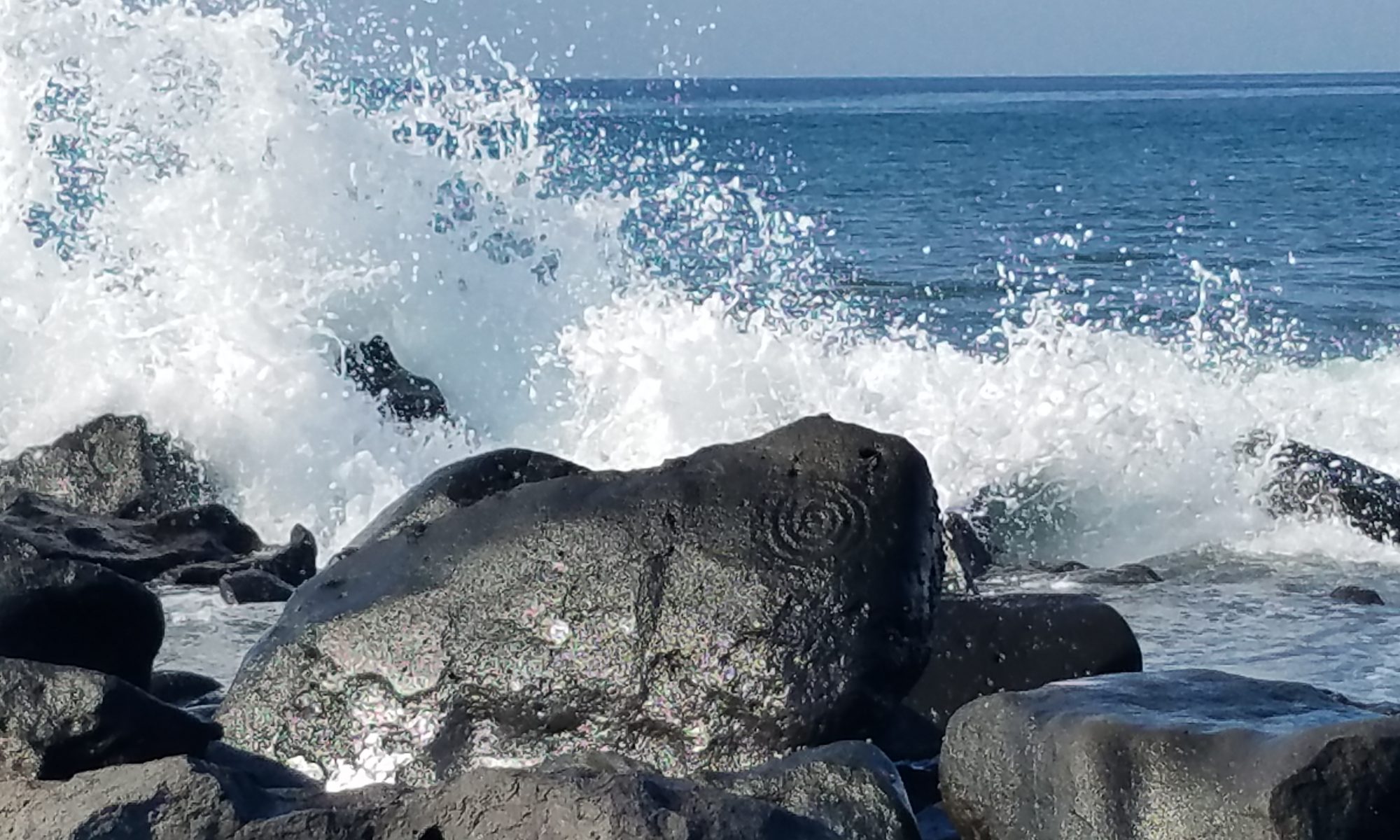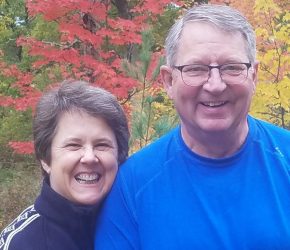2.21.2021; Pastor Rebecca Ellenson; Genesis 9; Yellow Lake Lutheran Church, Danbury WI
“Never again! I will never again use my hands to strike my child,” he declared, as he came down the stairs, after administering a spanking to his 3-year-old son. “Never again! All I ever learned from corporal punishment was to fear my father and to do whatever I could not to get caught. We will find another way to raise our child. I will not be that kind of a dad. Never again!” It was a sort of covenant he made and kept, a promise that was unconditional. No matter what his son would do, that father vowed to use his hands for love, to build up and to teach not to hurt or tear down.
Whenever I read or hear the story of the end of the flood, I remember that day, now 31 years ago when my son’s father changed, when he proclaimed, “never again!” In today’s lesson about the end of the flood we hear God’s declaration of those same words, three times. Never again shall all flesh be cut off by the waters of a flood and never again shall there be a flood to destroy the earth. Never again.
Even the non-religious know something about the story of the flood, the animals coming two by two, the building of the divinely commissioned ark. The story comes from the first section of Genesis, the pre-historical part where we find the cosmic stories of creation, the garden, the tower of babel, the great flood, and the mingling with the giants in the earth. These fantastic stories speak to the nature of reality. Nearly every culture has them, stories of origin and identity. Instead of being literal history, they provide archetypes; they describe a world view.
Many countries have their flood stories. For example, the Babylonian flood story that circulated in the ancient world at about the same time had many of the same elements. But that story explained why life is filled with tragic loss and depicts gods whose actions are whimsical and capricious, whose disregard for human beings demonstrates a great expanse between gods and their creation.
The story of the great flood may start the same, with destruction, but it ends in a completely different way. Several of the stories in this first part of Genesis work this way. They mimic the surrounding cultures’ patterns by using the same structures but then put a totally new twist on the portrayal of God and the purpose of life.
In the story of Noah’s Ark, the unconditional and unending promise of God is displayed for all the world to see by the sign of the rainbow. Even though the problem of sin survived the flood, God’s response would never again be total destruction. God’s weapon, the bow, is put aside forever. Never again! Instead, like a loving father, God’s response to sin will be forgiveness and restoration.
I know a thing or two about floods. I grew up in Moorhead, MN, on the banks of the Red River. Perhaps you know that the Red River flows north past Winnipeg where the snow melts later. The forces of nature work against the drainage of that fertile valley. So, every year the whole community copes with the rising waters. My family’s home was just two blocks from the river. I remember a wet basement in the spring. I remember getting excused from high school to help fill sandbags. There were road and bridge closures. The damp dirty smell of melting snow and ice led to the even wetter, dirtier smell of rotten sheetrock and saturated insulation left in piles on the boulevards. In fact, one of my first real jobs was working for the parks and recreation board, on a post-flood clean-up crew. Yuck.
Floods are destructive and devastating. Their filthy aftermath lasts a long time. I’ve always thought it strange that Noah’s Ark is a popular theme in Sunday School and children’s books. It’s not a children’s story, after all. No, the destruction of all life, except for what fit on the ark is a theme for mature audiences. Gustave Dore captured the chilling horror of the flood in his 19th century engravings called The Deluge or The Great Flood. A lone rock, the tip of a high mountain is the only land that rises above the heaving waves, with frantic and fearful bodies clinging and climbing over each other to grasp a final moment of solid earth.
I think the story is motivated not by anger but out of exasperation that “every inclination of humankind’s heart was evil, continually. The story relates the 40 days of rain, the 40 days of flooding, the 150 days of continuing flooding and then the months and months of waiting for the destruction to drain away. After the water was gone, the debris and the stinking damp soils the whole world and God says Never Again! I will not be that God. I will relate to my creation with only love and restoration!
God unconditional covenant with the whole earth is marked by the rainbow, a reminder, not just to humanity and creation, but to God’s own self—that love is the way, healing and rebuilding are the divine intention.
The repeating pattern spirals through the scriptures, and through our lives too.
We see it in the garden stories. God creates a good thing, humanity messes it up, breaking the rules, lying and hiding. Then God creates a solution and restores the relationship broken by sin. And life goes on. I think of it as a sort of spiral, like a slinky turned on its side. Life is good at the top, human action starts a sinking spin. Then at the bottom God reaches out—God hears the cries, sees the suffering and acts with gracious concern and life goes on.
It happened with Cain and Abel, it happened in Noah’s day, it happened in Babel. The pattern continued with Sarah and Abraham and their descendants. Over and over again, God steps in to fix the muddle created by God’s people. When Abraham passes Sarah off as his sister, when Hagar is cast out into the desert, when Isaac is almost slaughtered, when Jacob cheats Esau, when Laban cheats Jacob, when Joseph is sold into slavery… Each time God restores the situation.
Right there is the gospel. The story of the flood and God’s promise of Never Again, symbolized by the rainbow, sets the pattern. Destruction and devastation threaten each and every generation, not just in biblical times, and not from God’s own command. Humanity is fully capable of bringing about its own wreckage. The good news is that God’s continuing commitment is found in those repeated words: Never Again. God’s perpetual gaze toward the rainbow restores our spiral of ruin, time and again.
You can see it if you look. Consider our world at the moment. Oh, how God’s heart must still break that the inclination of our hearts is still evil, perpetually. Social and economic injustice and racial disparity continue. Displaced persons and refugees are at global all-time highs. Hunger ravages the lives of over 2 million children starving from famines in 7 countries. 111 people have suffered with covid leaving 2.5 million dead. Unchecked ecological damage is catching up to us with weather extremes. Civil unrest and the rise of nationalism threaten our social stability. I don’t need to go on.
The causes for divine despair continue. Sin cannot be wished away or washed away or even drowned. It just comes back. Shortly after the water receded what did Noah do? He planted a vineyard and then got wasted, passed out drunk, naked and exposed. He wound up cursing his son Ham into slavery for leaving him uncovered. Then that story was used to justify human slavery through the generations.
What did God survey after the flood? Not a newly washed world, pristine and ready for a new beginning, as anyone who has lived through a flood can attest. No, it would have been a flood-ravaged world, with stinking piles of soggy, sodden debris and the aftermath of wreckage. As I said, it is an adult themed story.
The good news comes in the change that happened in God’s heart, the commitment to grace and forgiveness, the promise of Never Again! People still cheat and steal and kill and make wrong decisions and fail. The spiral continues, and thanks be to God, the rainbow still proclaims God’s promise.
God keeps forgiving, showing mercy, offering second chances, pointing humanity in the right direction, renewing, restoring, loving. God’s grace made its first big debut after the flood in an unconditional covenant with all people and all creation. That spiral of love continues through the cross to the resurrection. It is repeated in the promises of baptism where we are named for the one who keeps making all things new.
Let us pray. Holy God of the rainbow, God of Easter morning, God of constant grace, you claim us in the waters of baptism. May we remember with every raindrop, every flake of snow, every prism of light, every sip of water, every splash that you can transform you creation with love and forgiveness. Open us to your truth, that only love redeems. Amen.

